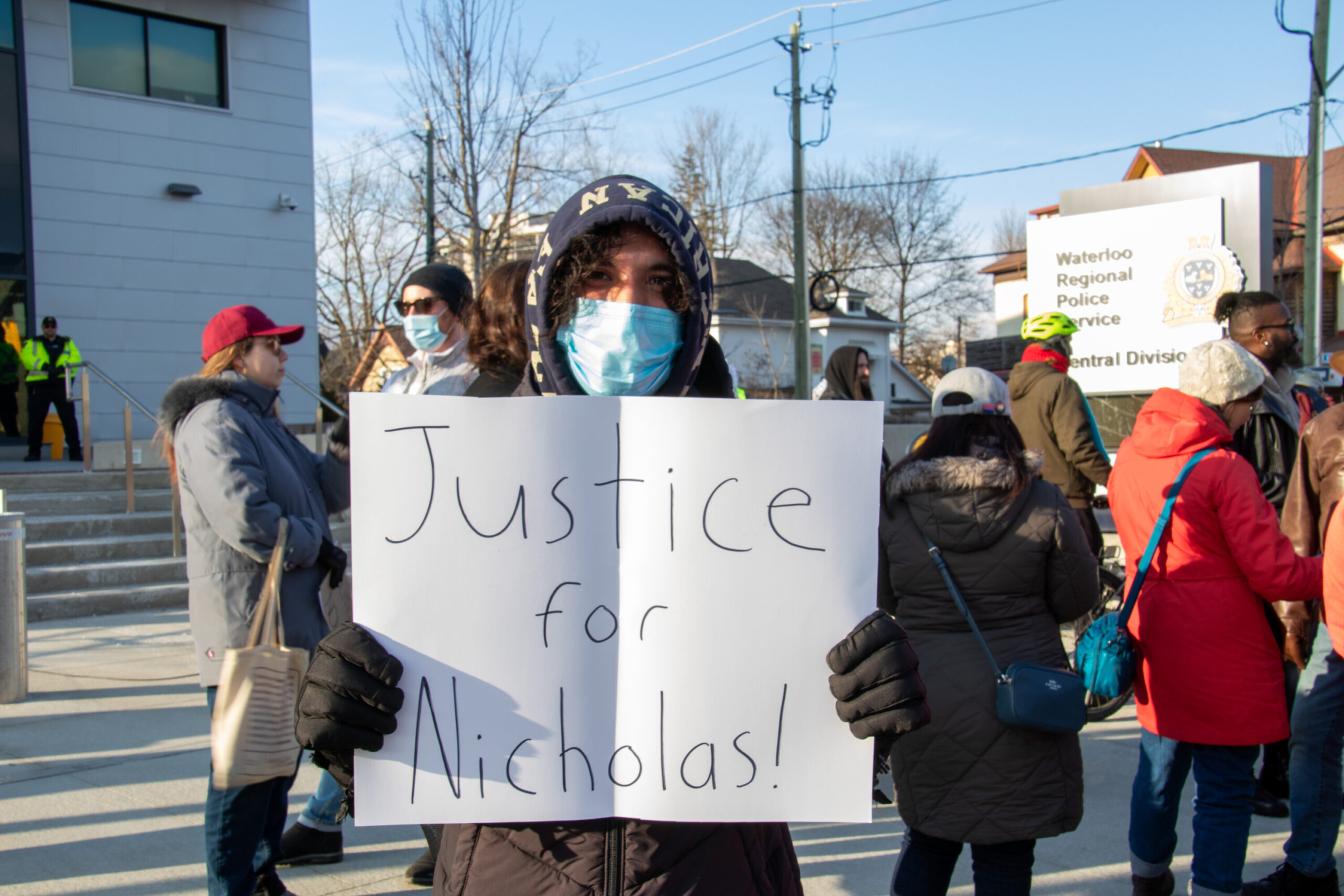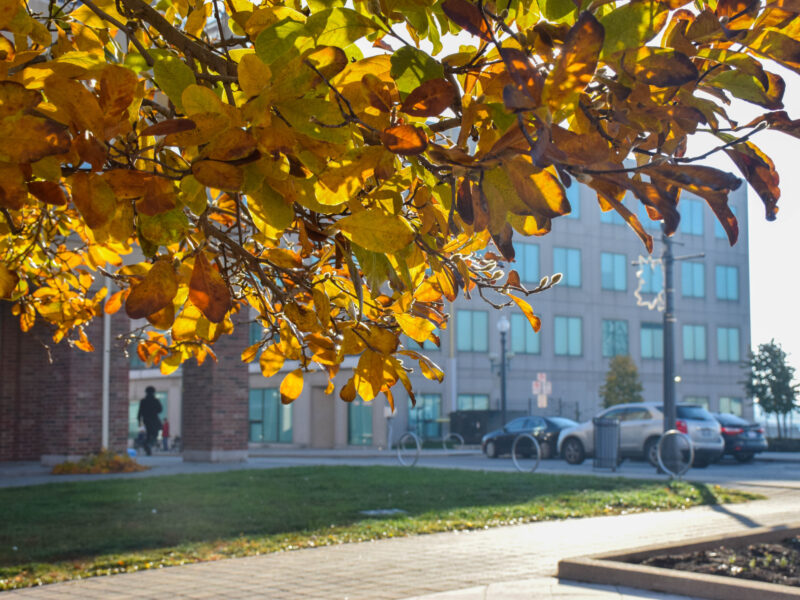Serena Austin / President & Publisher
Protestors show support for Nicholas Nembhard outside WRPS Central Division.
On Friday, Feb. 23, protestors gathered in front of the Waterloo Regional Police Services headquarters in solidarity with Nicholas Nembhard, a schizophrenic Black man who was killed by an officer just days earlier.
According to the Special Investigations Unit, which is responsible for investigating police involved deaths, injuries and shootings in Ontario, WRPS were called to a home on Brybeck Crescent in Kitchener for a disturbance call around 9 p.m. on Monday, Feb. 19. In a release published the next day, the SIU said, “Upon arriving at the scene, officers encountered a man holding an edged weapon. There was an interaction, and one officer discharged his firearm. The man was struck.”
The man, 31-year-old Nembhard, was then taken to the hospital where he died due to his injuries.
In interviews with CBC, Nembhard’s brothers said he was experiencing a mental health crisis, and they called the police to help him.
“If we knew they were going to do this to Nicolas we would have never called the cops for that,” said Nicholas’ brother Mario, who was at the home when police arrived.
Nembhard’s death has renewed calls to defund and abolish the police in the region.
“We need to, as a community, respond in outrage [to police violence],” said Jacara Droog, a social worker and organizer with Fight Back KW and GroundUpWR, at the protest.
Along with defunding and abolishing the WRPS, the other calls to action that came with the protest were refunding the community and stopping police from responding to mental health crisis calls.
“Increased police budgets make no difference in the support and the care of people in our community,” said Ann Marie Beals, an assistant professor in the community psychology program at Wilfrid Laurier University. “And the amount of Black and Indigenous people who are gunned down by the police is increasing.”
A University of Toronto study released at the end of 2023 found that police budgets have little to do with crime rates across the country and more specifically, increases to police budgets haven’t led to lower crime rates. In 2024, the WRPS saw a $13.4 million dollar increase to their budget from last year, adding up to $252.4 million, making it the second-largest portion of the regional budget. In 2023, more than $200 million of the WRPS’ funding came from property taxes.
“The police’s job was to catch people who ran away,” said Beals, referring to slave patrols and the RCMP, whose earliest job was to forcibly remove Indigenous peoples from their land and onto reserves. “It just has morphed into another form of oppression, using police brutality and using the carceral system. ‘We can’t kill you, so we’ll lock you away.’”
This article was originally published in print Volume 23, Issue 7 on Thursday, March 7.




